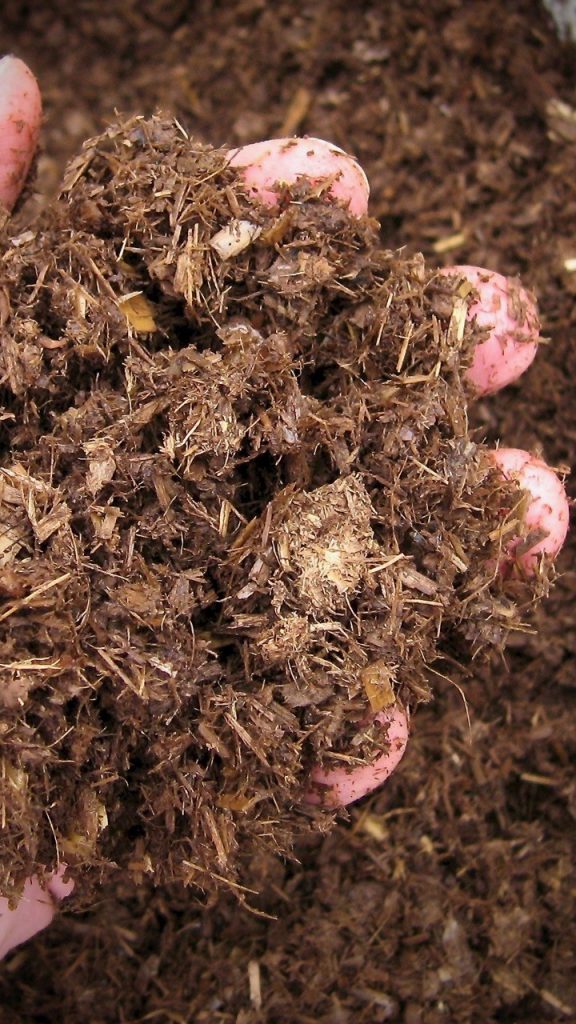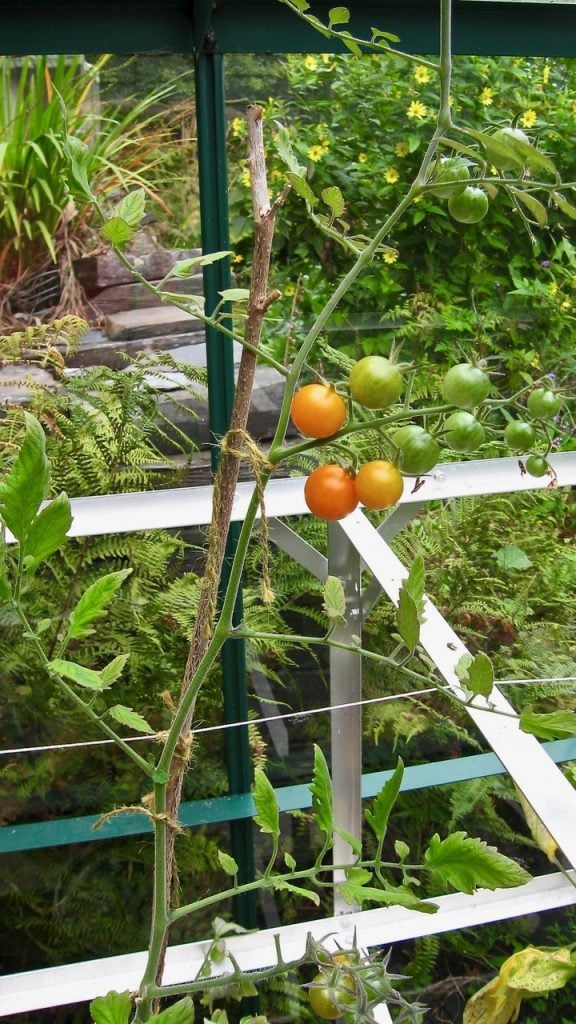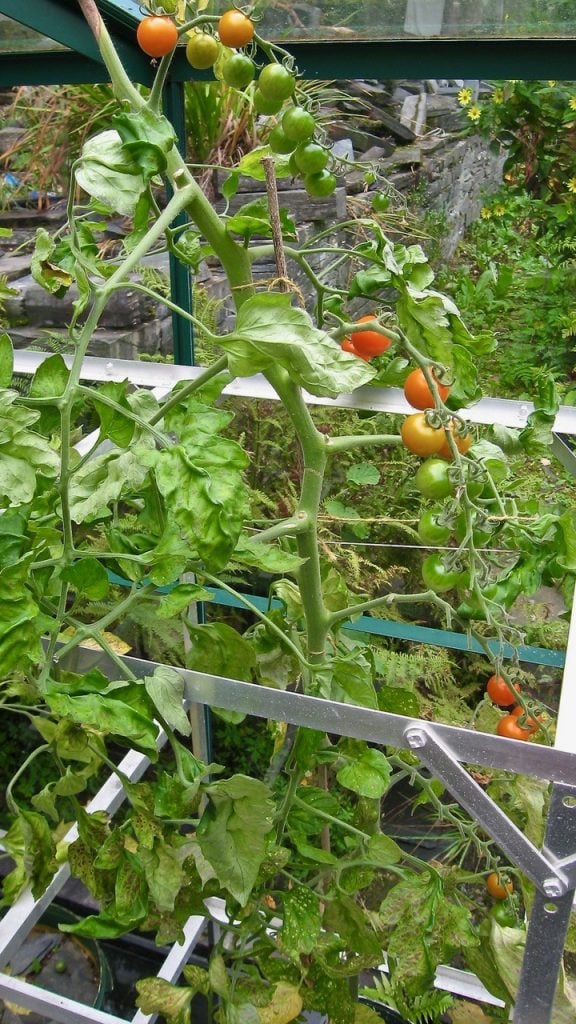Could a new – and renewable – product on the market provide a nutrient-rich boost for home-made peat-free mixes? Early trials are bearing fruit.

Whenever a new and – yawn – ‘amazing’ product blips on my gardening radar, the first alarm bells to go off are perfect twins: caution and scepticism. I’ve seen plenty of stuff come and go in my garden-writing lifetime. Some of it’s sunk without trace, despite the lifebuoy of hype. Often it’s pure tat. Sometimes it clings on for a while before going under. But just occasionally, something comes along that does what it claims it can do, and is genuinely useful to us gardeners.
My bells rang loud when samples of a frankly dull and seemingly innocuous new material arrived in my greenhouse this spring, just in time to be included in my latest round of peat-free compost experiments. In fact, it was reading the solid testimonials for ‘digestate’ that inspired this season’s small-scale potting compost trial.
I’m always on the lookout for genuinely renewable materials – those which cause zero or minimal harm to our living world and help my garden-found resources stretch further and work harder. I successfully mix my own peat-free sowing and potting composts; a basic 50:50 blend of sieved, worm-worked compost from my ‘cool’ bins, and fine and crumbly mature leaf mould. The bright green upsides to my DIY mixes are that they involve no ‘gardening miles’, don’t come in a plastic bag, and are free at the point of potting (human health benefits include leaf gathering, sieving and mixing workouts). They grow strong, healthy plants, but can run out of steam sooner than a quality bought-in peat-free, lacking extra oomph.

Having witnessed soft and sappy shredded wood chips’ alchemical effects in enlivening my garden soil, I’d already planned to try adding it to the compost I use for growing greenhouse tomatoes. Digestate has been garnering favourable feedback from those already trying it out as an effective mulch/soil improver, and as a promising slug deterrent. Getting some digestate inevitably clocked up a fair few gardening miles and required some plastic, but it was too intriguing to resist. I should say that no one is yet recommending using digestate as part of a DIY peat-free compost mix, but I knew I had to try it. So I’ve been testing both wood chips and digestate, and I’m glad I did.
My samples came from Bloomin’ Amazing and Natural Grower, relative newcomers to the gardening game; their core business is generating renewable energy from biomass. They grow crops, primarily forage maize (a cousin of sweetcorn that’s also fed to cattle, and which we increasingly see stretching away to the horizons in intensively farmed areas) and other grasses. The crops are harvested, chopped up, stored, and then fed to another kind of livestock: naturally occurring bacteria which live inside an anaerobic (oxygen-free) digester (the domed structures near farms, set amid maize forests). The breakdown of the maize produces biogas (methane), which is either fed into a power unit that converts it into electricity, or refined and added to the domestic gas supply.
Digestate is what’s left behind when the bacteria have done their stuff. The liquid is squeezed out and can be used as a balanced, all-round liquid feed, while the fibrous solids are returned to the soil by farmers (reducing the need to import fertilisers), and they are now being sold to gardeners as a 100% peat-free soil improver-cum-mulch. The suppliers claim that digestate provides key nutrients – nitrogen, phosphate and potash – plus other essential trace minerals. The solid digestate is clean, pleasant to handle, and smells similar to garden compost, but the liquid digestate is decidedly whiffy, smelling – despite it being ‘vegan-friendly’, as it’s derived solely from plants – akin to a blend of fermenting comfrey and manure. Wear gloves!
My peat-free mix for this season’s trial is SylvaGrow Organic, a top, reliable doer here, which is certified organic by the Soil Association. I grew F1 ‘Sungold’ tomatoes (from organic young plant grower Delfland Nurseries), in pots in my greenhouse. As a control, I grew one plant in 100% SylvaGrow Organic, and I also used it as a base for the other experimental mixes. The control plant – unsurprisingly – romped away, and is currently laden with fruits.

Surprisingly, the addition of fresh wood chips gave mixed results. The weakest performer is in a mix of a third each (by volume) of leaf mould, wood chips and Bloomin’ Amazing. Despite a flush of life-boosting toadstools appearing around its base, the plant grew weak, pale and spindly. The plant in a mix of 75% SylvaGrow Organic plus 25% wood chips fared way better, but not as well as the 100% SylvaGrow Organic control.
The 50:50 mix of leaf mould and Bloomin’ Amazing is a revelation. Leaf mould imparts its exceptional physical and biologically ‘alive’ properties to both soil and home-made compost, but contains low nutrient levels, and needs to be mixed with something that will feed hungry plants (I normally use worm-worked compost). In this mix, the Bloomin’ Amazing digestate did the job handsomely, resulting in a strong-growing ‘Sungold’ that’s smothered in flowers and fruits – without any additional feeding all summer. The digestate has provided everything needed by the plant food-wise.
I’m impressed, but nowhere near as impressed as I am by the plant growing in a blend of a third each of leaf mould, SylvaGrow Organic and Bloomin’ Amazing. This produced a big, strong, truss-decked plant that pipped the control plant to the post, the Bloomin’ Amazing giving the SylvaGrow Organic a noticeable boost. But the outright joint winners – in terms of strength of growth, overall size and fruitfulness – had their roots in a mix of 75% SylvaGrow Organic and 25% Bloomin’ Amazing/Natural Grower, where the respective digestates added extra clout to an already top-quality peat-free. Now that is impressive.

So, on the basis of their performance and garden-usefulness, my alarm bells are now on standby – but they’re not switched off. Dull as it looks, digestate clearly has gardening potential, but it comes with its own Achilles heel. Farming systems that use land to grow crops to feed bacteria – rather than people – court obvious criticism. Although they can utilise both domestic and commercial food waste in a mix with maize and grasses, consistent energy output is achieved through consistent inputs (plastic contamination is also an issue with some food waste). Forage maize is being harvested this month in many areas; the fields are easy to spot with their long rows of thick, pale stubble poking out of the ground. Unless a green manure cover crop is then sown, the soil may well sit bare over winter, making it vulnerable to serious erosion which, exacerbated by increasingly intense rainfall, can pollute our waterways.
Fortunately, both Bloomin’ Amazing (£7 for 70 litres) and Natural Grower (£17.99 for 16 litres) have reassuring credentials: Bloomin’ Amazing has approval to supply its digestate to local organic farmers, while Natural Grower’s products are organically certified by the Soil Association. If canny organic farmers are giving this renewable material a go, surely we gardeners should also be giving it a whirl.
Digestate clearly has much to offer eco-savvy gardeners. Top of the list is that with a decent supply of rotted leaf mould to hand, making your own peat-free potting mix couldn’t be easier; anyone can do it. Digestate also shows real promise as a nutrient-rich ‘booster’ for any bought-in peat-free, potentially reducing how often you need to feed (if at all). It’s packed with organic matter and nutrients that will build and enliven soil, which could be especially useful in a no-dig garden. Vegan gardeners could give it a go, too. It’s a relief to come across a product being flogged to gardeners that actually does what it says on the bag/tub. I’m already dreaming up future growing trials using digestate. It might be dull, but it’s going places.
Text and images © John Walker
Find John on Twitter @earthFgardener










